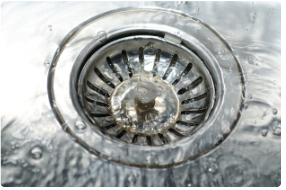ANSI/ IICRC S500 provides a specific set of practical standards for water damage restoration. The IICRC is an American National Standards Institute (ANSI) member and accredited standards developer. ANSI coordinates standards, conformity assessment, and related activities in the United States of America
a. Identify and document the source of the water damage and determine the type and category of water.
Identify and document the source of the water damage to determine the type and category of water. This will help choose the best action for dealing with the water damage and to assess the extent of the damage. Identifying and documenting the source of water damage will make it easier to determine what repairs are needed and the cost.
b. Assess the affected area and determine the appropriate drying goals.
Assess the affected area and determine the appropriate drying goals to ensure that the restoration process is successful. The assessment should include evaluating the material type, the damage extent, and other factors that may affect drying time. Once these factors have been considered, a drying goal can be set to help ensure that all materials are dried properly and efficiently.
c. Develop a drying plan and set up the necessary equipment.
According to IICRC S500 Standard, Drying is essential in many industrial processes, and having the right equipment and plan in place can help ensure the process runs smoothly. We will be able to determine the correct type of dryer, the optimal temperature, and humidity levels, and set up safety protocols. By following these steps, you can ensure that your drying operations are efficient and effective.
d. Remove standing water using extraction equipment.
We don’t want to create an environment that is conducive to the growth of mold and mildew. Removing standing water using extraction equipment is essential to prevent this from happening. This equipment can quickly and efficiently remove large amounts of standing water from a property, allowing the restoration process to begin. Extraction equipment is also helpful in preventing further damage by removing any remaining moisture that could lead to other problems down the road.
e. Apply anti-microbial agents to prevent the growth of bacteria, mold, and other harmful microorganisms.
These agents can be applied to surfaces and fabrics to create a protective barrier that will inhibit the growth of these organisms. It can help reduce the risk of infection and contamination in areas where these organisms are present. Additionally, anti-microbial agents can also be used to clean and disinfect surfaces, helping to keep them free from harmful microorganisms and reducing the risk of infection and contamination in any environment, so it will meet IICRC S500.
f. Use air movers and dehumidifiers to reduce the moisture in the air and promote evaporation.
IICRC S500 Standard says that Air movers help to circulate the air, allowing it to move more quickly and efficiently, while dehumidifiers remove excess moisture from the air. Together, these two tools can help reduce humidity levels in your home or business, making it more comfortable and preventing mold growth. Using air movers and dehumidifiers together can create a healthier environment for yourself and your family.
g. Monitor the drying process and adjust the equipment and drying plan as needed.
It involves keeping track of the temperature, humidity, and other environmental factors to ensure that the product is appropriately dried. Monitoring these factors makes it possible to adjust the equipment and drying plan as needed to achieve optimal results. This can help reduce waste and improve efficiency in production processes.
h. Remove any materials that cannot be restored or are not cost-effective to repair.
This process involves assessing the condition of the materials, determining whether they can be repaired or restored, and then deciding if it is more cost-effective to replace them. In some cases, removing these materials may also be necessary for safety reasons. It is essential to consider all factors before deciding whether to remove any materials from a project.
i. Disinfect and sanitize the affected area to prevent the spread of bacteria and other contaminants.
Using the right products and techniques is essential to ensure that all surfaces are properly disinfected and sanitized. This will help reduce the risk of infection, illness, and other health risks associated with bacteria and other contaminants. It will also help maintain a clean environment for everyone in the area.
j. Restore any damaged materials and surfaces and perform any necessary repairs.
Identifying the damage’s source, assessing the damage’s extent, and determine necessary repairs. This process can involve various techniques such as cleaning, sealing, patching, painting, or replacing damaged materials. Restoring any damaged materials and surfaces to their original condition makes it possible to prevent further deterioration or damage from occurring in the future.



